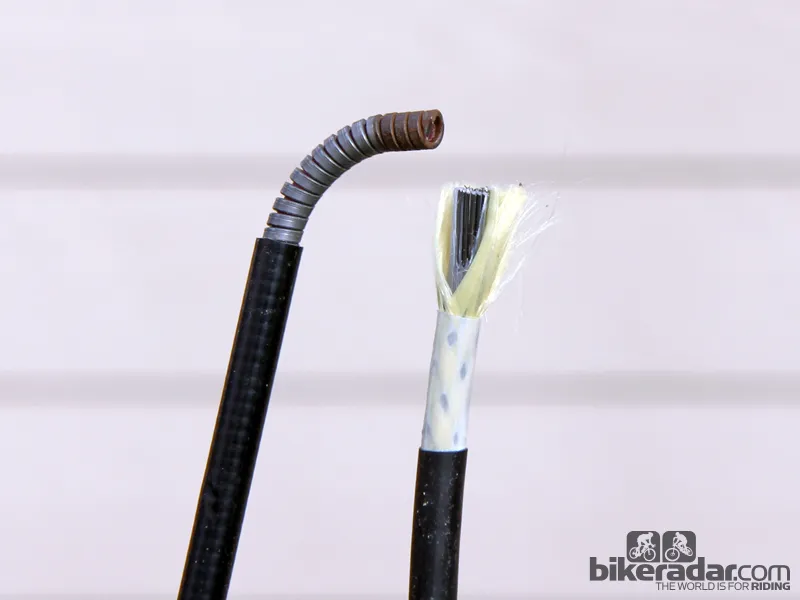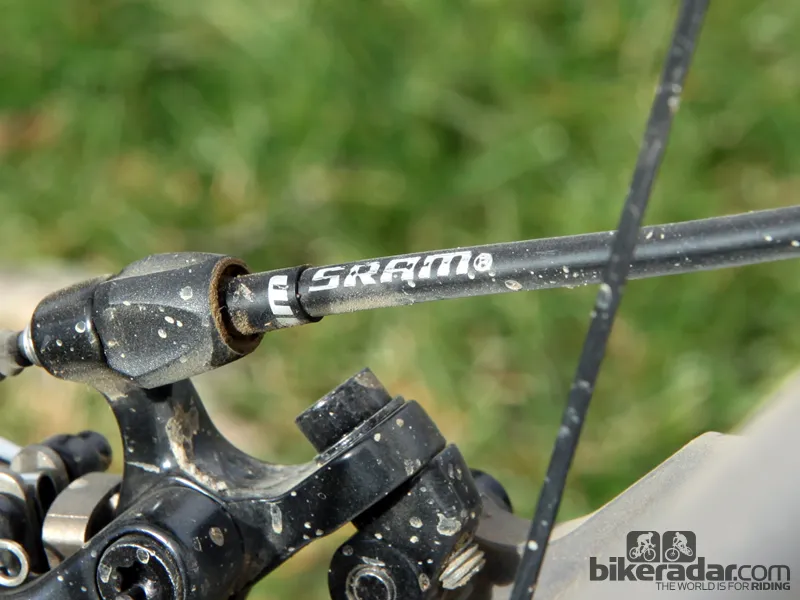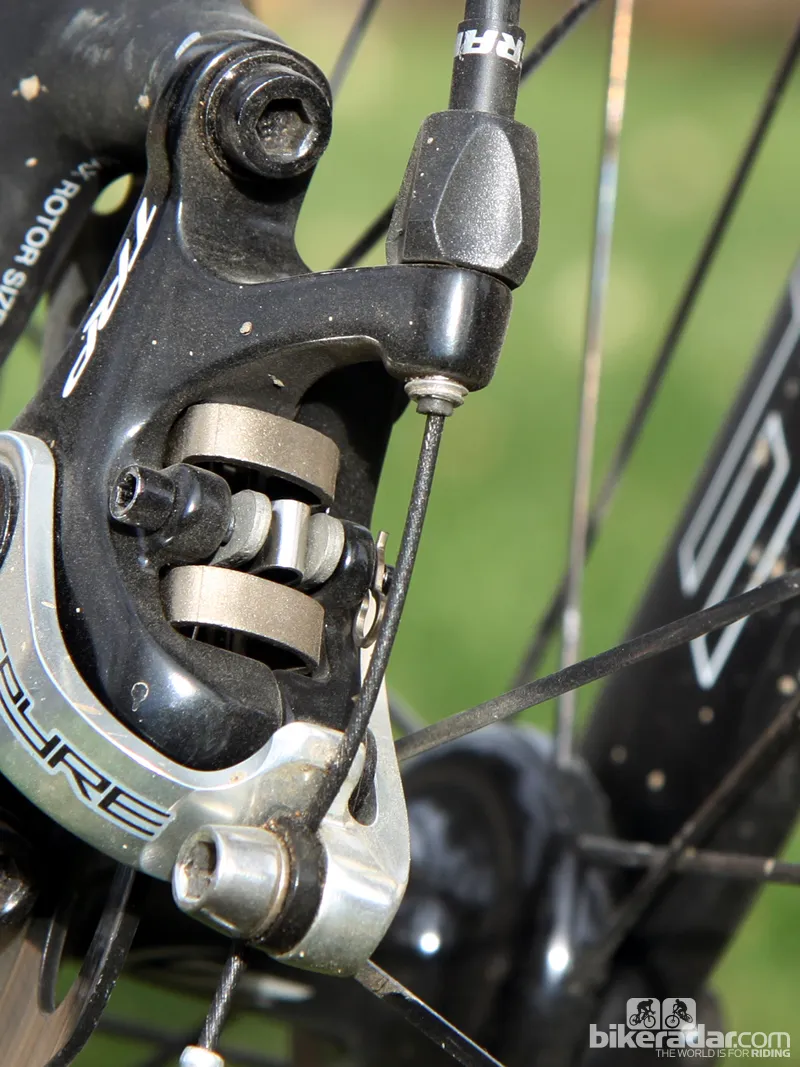Mechanical disc brakes may offer better performance than rim brakes in theory, but they're also more susceptible to housing compression that can compromise braking power and produce a spongy lever feel. The SRAM SlickWire brake cable and housing kit, however, uses a squish-resistant construction that retains more of the potential of disc brakes. It's an improvement over standard brake casing but there are better options available.
Standard brake housing is actually built very similarly to a coil spring, with a single piece of flattened steel that's spirally wrapped around a low-friction inner liner. The layout makes for great flexibility but it's also relatively easy to compress the housing lengthwise under load.
SlickWire is instead built like derailleur housing with multiple thin wires oriented mostly lengthwise, which are much harder to compress under load for a more efficient transfer of lever input, and an additional intermediate layer of woven aramid fiber is added to prevent blowouts (as some riders who tried conventional 5mm shifter housing may have found out back in the V-brake days).
Not surprisingly, we found SlickWire to deliver a more direct feel than conventional casing, particularly on bikes that require full-length housing from lever to caliper. Lever feel is noticeably firmer and there's a tangible boost in power, particularly in high-demand situations where housing compression is most prevalent.

SRAM's SlickWire brake housing (right) is notably more resistant to compression than typical brake housing (left)
That said, SlickWire isn't nearly as much of an improvement as we had hoped, especially given the substantial price premium over conventional stuff. Other compressionless options such as Yokozuna Reaction and Nokon are much more successful as squelching the squish in our experience and both have substantially less friction, too, despite SRAM including coated inner cables and pre-lubed liners. Disappointingly, we actually got better performance after switching to standard stainless steel cables.
- Pros: Better lever feel and boosted power as compared to conventional brake housing, offered in multiple colors
- Cons: Not as big an improvement as other compressionless options, too much friction, expensive for what you get

